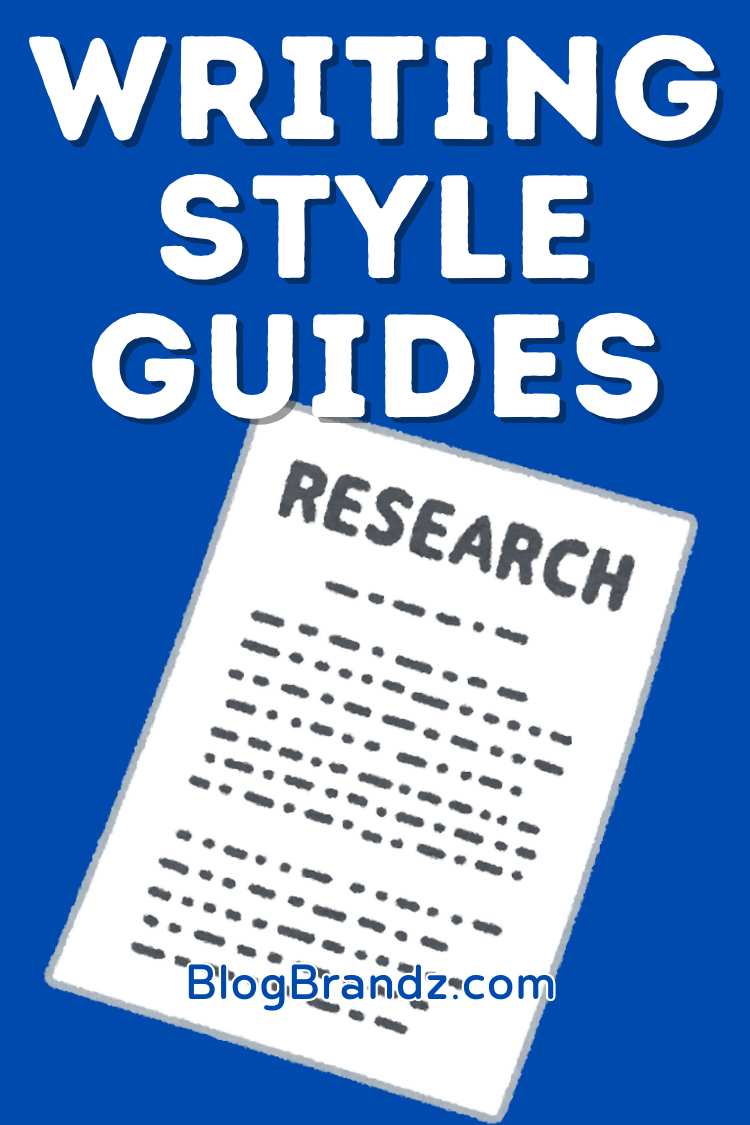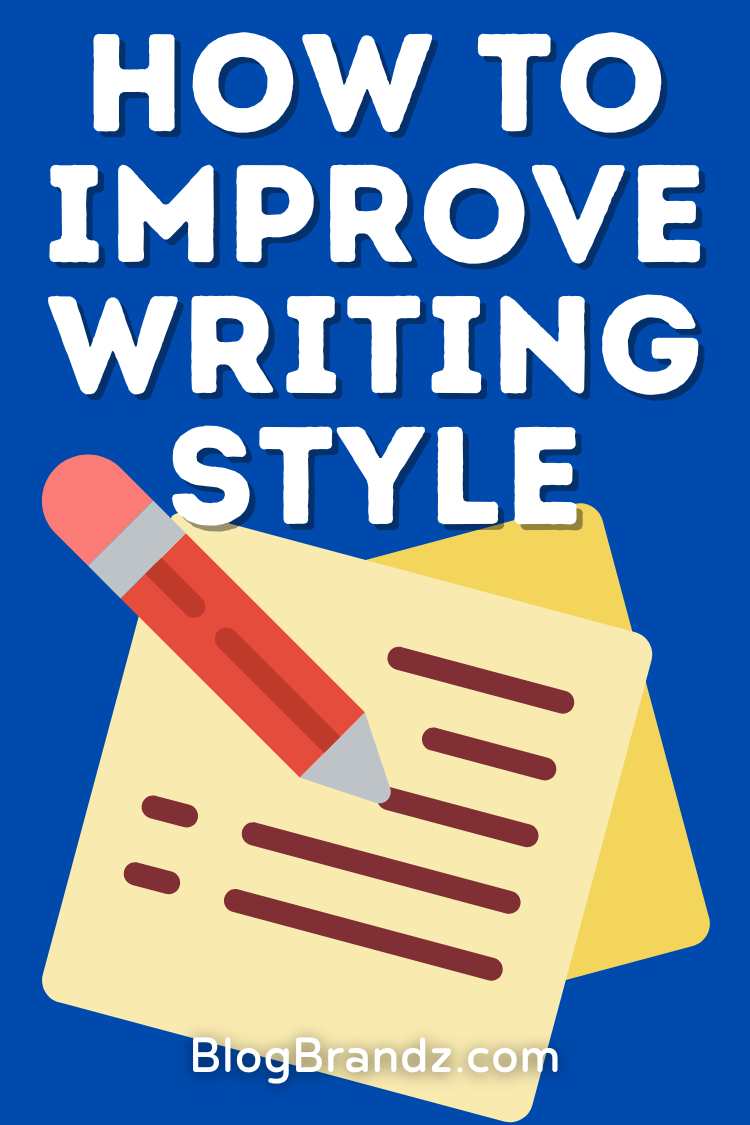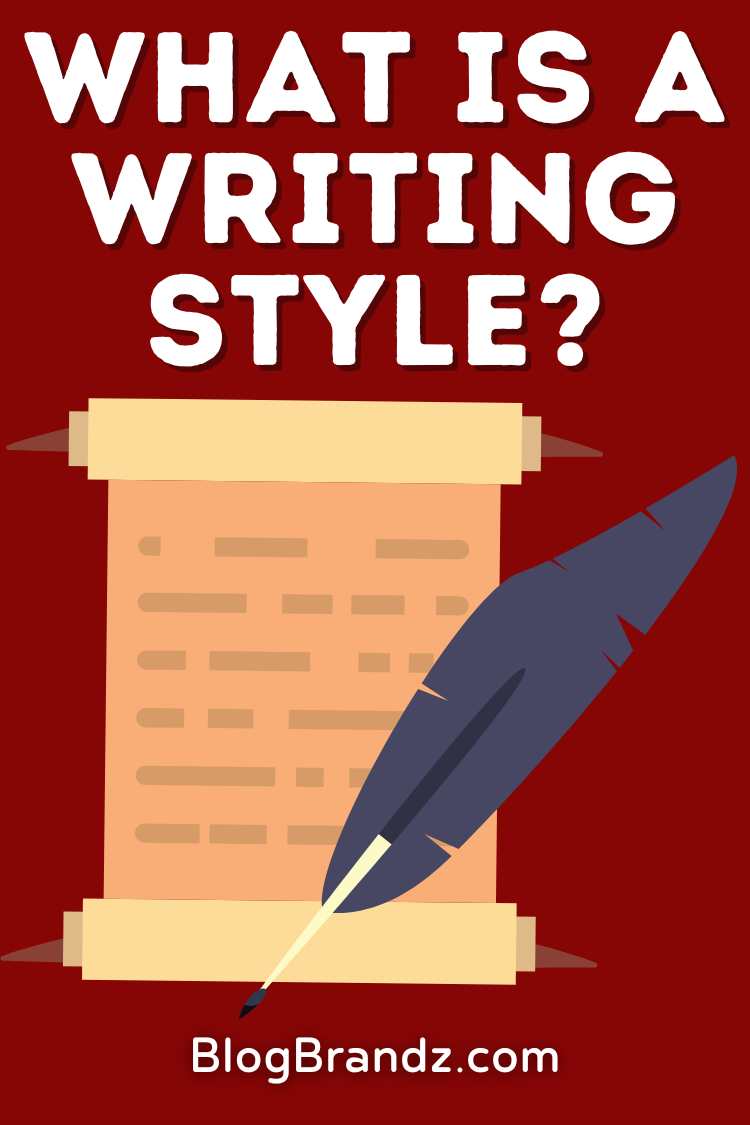
Master the art of written communication with these writing style guides and writing style examples to modify your writing style for a specific audience.
Mastering the art of writing goes beyond just penning down words. It involves understanding and implementing a specific writing style that not only conveys your message effectively but also adheres to the standards of scholarly communication.
APA, AP, Chicago, and other writing style examples serve as the backbone of this communication, dictating everything from citations to formatting.
In this writing style guide, you’ll discover the nuances of each style, explore writing style examples, and gain insights into how these styles can elevate your writing to new heights.
Whether you’re a student, researcher, or professional, understanding these writing style examples is key to mastering the craft of writing.
Contents
What Is Writing Style?
What is a writing style? A writing style refers to how a writer expresses their thoughts, ideas, and personality through written text.
Some writing style synonyms include “literary style,” “prose style,” or simply “style” when referring to how a writer expresses their ideas through written language.
Writing style encompasses a range of elements, including the tone, voice, vocabulary, sentence structure, and overall presentation of the writing. Writing style can vary widely depending on the purpose of the writing, the audience, and the writer’s personal preferences.
Some writers may have a more formal writing style, characterized by complex sentences, elevated vocabulary, and a serious tone, while others may have a more informal style, using simpler language, shorter sentences, and a more conversational tone.
Writing style is also influenced by the genre or type of writing. For example, a piece of academic writing will typically have a more formal style than a piece of creative writing. Additionally, different cultures and periods may have their unique writing styles.
Overall, writing style plays a crucial role in how readers perceive and interpret a piece of writing, and skilled writers often adapt their style to suit their purpose and audience. When your writing style is similar to the way your readers think and talk, it is often more effective and engaging.
This alignment can help you connect with your audience on a deeper level and make your message more relatable. It can also make your writing easier for your audience to understand and follow, leading to better communication overall.
Adapting your writing style to match your audience’s thinking and speaking patterns involves understanding their preferences, background, and knowledge level.
It may involve using familiar language, examples, and references that resonate with your audience. This approach can help you establish a stronger connection with your readers and make your writing more impactful.
8 Common Writing Style Examples
There are several different writing style examples, each with its unique characteristics. Here are some common writing styles:
Descriptive Writing:
The descriptive writing style focuses on describing a person, place, or thing in detail, appealing to the reader’s senses. For example:
“The sun dipped below the horizon, painting the sky in hues of pink and orange, casting long shadows across the sandy beach.”
Narrative Writing:
The narrative writing style tells a story, often with a plot, characters, and a setting. For example:
“Sarah walked through the old, creaky house, her heart pounding with fear. She knew she shouldn’t be there, but curiosity drove her to explore every room.”
Expository Writing:
The expository writing style explains or informs the reader about a topic. For example:
“The water cycle is the continuous process by which water evaporates from the Earth’s surface, rises into the atmosphere, cools and condenses into clouds, and falls back to the Earth as precipitation.”
Persuasive Writing:
The persuasive writing style aims to convince the reader of a particular point of view or argument. For example:
“Smoking should be banned in all public places to protect non-smokers from the harmful effects of secondhand smoke.”
Argumentative Writing:
Similar to persuasive writing, the argumentative writing style presents arguments and evidence to support a particular position, but it also acknowledges and refutes counterarguments. For example:
“While some believe that video games contribute to violence in society, studies have shown that there is no direct causal link between the two.”
Analytical Writing:
The analytical writing style examines something in detail, breaking it down into its components and analyzing how they work together. It often involves evaluating and interpreting information. For example:
“Climate change is a global crisis that demands immediate action.”
Reflective:
Reflective writing is personal and introspective, often exploring the writer’s thoughts, feelings, and experiences. It encourages self-examination and self-awareness. For example:
“After the meeting, she took a moment to reflect on her performance and consider ways to improve.”
Technical:
Technical writing is clear, concise, and focused on straightforwardly explaining complex information. It is often used in manuals, reports, and scientific papers. For example:
“The software update improves system performance and fixes several bugs.”
Creative:
Creative writing is imaginative and expressive, often involving storytelling, poetry, or other forms of artistic expression. For example:
“The moonlit path wound through the forest, whispering secrets to those who dared to listen.”
These are just a few examples of writing styles, and many pieces of writing may incorporate elements of multiple styles. The choice of writing style depends on the writer’s purpose, audience, and the context in which the writing is being done.
8 Popular Writing Style Guides
Writing style guides are manuals that provide standards for writing and formatting documents. They are used to ensure consistency and clarity in written communication.
These writing style guide examples help writers maintain consistency and clarity in their writing, ensuring that their work is professional and easy to understand.
#1. APA Writing Style
APA (American Psychological Association) writing style guide is a writing style and format for academic documents such as scholarly journal articles and books. It is commonly used for citing sources within the field of social sciences.
Key features of the APA style include:
- In-text citations: APA style uses an author-date citation system, where the author’s last name and the publication year are included in parentheses after a quote or paraphrased information.
- References page: A list of references at the end of the document provides full bibliographic information for all sources cited in the text. References are listed alphabetically by author’s last name.
- Title page: APA style often requires a title page with the title of the paper, the author’s name, and institutional affiliation.
- Headings: APA style uses a system of headings to organize the content of a paper. There are five levels of headings, each with specific formatting requirements.
- Margins and spacing: APA style requires one-inch margins on all sides of the paper and double-spacing throughout the text.
- Page numbers: Page numbers are typically included in the top right corner of each page, starting with the title page.
- Writing style: APA style emphasizes clarity and conciseness. It discourages the use of biased language and recommends the use of active voice.
Here is an APA writing style example of how to cite a book:
In-text citation:
(Smith, 2019)
Reference entry:
Smith, J. (2019). The Art of Writing: A Comprehensive Guide. Publisher.
APA style is designed to provide consistency and clarity in writing and to make it easier for readers to understand and locate the sources cited in a paper.
#2. AMA Writing Style
The AMA (American Medical Association) writing style guide is a widely used citation style in the field of medicine and related sciences. It is often used for writing research papers, reports, and other academic documents in medical and health-related fields.
Key features of the AMA writing style guide include:
- In-text citations: AMA uses a numbered superscript format for in-text citations. Each source is assigned a number, which corresponds to the full citation in the reference list.
- Reference list: AMA requires a reference list at the end of the document, listing all sources cited in the text. The reference list is organized numerically, based on the order in which sources are cited in the text.
- Formatting: AMA has specific guidelines for formatting papers, including margins, font size and type, spacing, and headers. Papers are typically double-spaced and use a standard font such as Times New Roman, size 12.
- Title page: AMA does not usually require a title page. Instead, the title of the paper, author’s name, and other relevant information are placed at the top of the first page.
- Headings: AMA uses a simple format for headings, with different levels indicated by different formatting (e.g., bold, italics, or underlining).
- Abbreviations: AMA provides guidelines for abbreviating terms commonly used in medical writing, including standard abbreviations for medical journals.
The AMA writing style guide is designed to provide consistency and clarity in medical writing, making it easier for readers to understand and locate the sources cited in a paper.
#3. AP Writing Style
AP Style stands for Associated Press Style, a writing and grammar guide used by journalists and writers in various industries, including journalism, public relations, and corporate communications. It is known for its clear and concise writing guidelines.
Some key features of the AP writing style guide include:
- Abbreviations: AP Style provides guidelines for abbreviating words and phrases, such as using “Mr.” for “Mister” and “St.” for “Saint.”
- Capitalization: AP Style specifies rules for capitalizing words in titles, headlines, and sentences. For example, it recommends capitalizing the first word in a sentence and proper nouns.
- Numbers: AP Style provides guidelines for writing numbers, such as spelling out numbers one through nine and using numerals for 10 and above.
- Punctuation: AP Style specifies rules for punctuation, such as using serial commas (e.g., “red, white, and blue”) and placing periods and commas inside quotation marks.
- Dates and times: AP Style provides guidelines for writing dates and times, such as using numerals for dates (e.g., “April 15”) and using a.m. and p.m. for times.
- Names and titles: AP Style provides guidelines for writing names and titles, such as using first and last names on first reference and last names only on subsequent references.
- Spellings and usage: AP Style provides guidelines for spelling and word usage, such as using “website” instead of “website” and avoiding jargon and clichés.
The AP writing style guide is designed to promote consistency and clarity in writing and to ensure that written content is accurate and easy to read.
#4. Chicago Writing Style
Chicago style, also known as the Chicago Manual of Style (CMOS) or CMS, is a widely used writing style guide popular in history, literature, and the arts.
The Chicago Manual of Style provides comprehensive guidelines for formatting manuscripts and citing sources. Key features of Chicago style include:
- Citation styles: Chicago style offers two citation styles: the notes and bibliography system (often used in literature, history, and the arts) and the author-date system (often used in the sciences and social sciences).
- Footnotes or endnotes: Chicago style uses either footnotes or endnotes to cite sources and provide additional information. The notes are numbered consecutively throughout the text and are listed at the bottom of the page (footnotes) or the end of the paper (endnotes).
- Bibliography: In the notes and bibliography system, the Chicago style requires a separate bibliography page that lists all the sources cited in the paper. The bibliography is organized alphabetically by the author’s last name.
- Title page: Chicago style often requires a title page with the title of the paper, the author’s name, and other relevant information.
- Headings: Chicago style uses a system of headline capitalization for titles and subtitles, with different levels of headings indicated by different formatting (e.g., bold, italics, or underlining).
- Quotations: The Chicago style provides guidelines for formatting and citing quotations, including how to use quotation marks, block quotations, and ellipses.
- Punctuation and grammar: The Chicago style provides rules for punctuation and grammar, including the use of commas, colons, and semicolons.
The Chicago writing style guide is known for its flexibility and is often used by writers and publishers who require a comprehensive and detailed style guide for their work.
#5. Army Writing Style
The Army writing style guide, or military writing style guide, refers to the specific style and format used by the United States Army for writing official documents, including memorandums, reports, and other correspondence.
According to army writing style regulations, all official correspondence must adhere to specific formatting and language guidelines. The primary goal of the army writing style guide is to communicate information clearly and concisely, ensuring that the intended message is understood quickly and accurately.
Key features of the army writing style include:
- Clarity: Army writing emphasizes clear and direct communication, avoiding unnecessary jargon, complex language, and ambiguity.
- Conciseness: Army writing is concise and to the point, using as few words as necessary to convey the message effectively.
- Format: Army writing follows a specific format for different types of documents, such as memorandums, orders, and reports. This format includes standardized headings, margins, and spacing.
- Active voice: Army writing typically uses the active voice, which is more direct and easier to understand than the passive voice.
- Organization: Army writing is well-organized, with information presented logically and sequentially.
- Professional tone: Army writing maintains a professional and respectful tone, avoiding slang, colloquial language, and overly casual expressions.
- Accuracy: Army writing is accurate and precise, with attention to detail in spelling, grammar, and punctuation.
The army writing style guide facilitates effective communication within the military, ensuring that important information is communicated clearly and efficiently.
What is the most important component of the army writing style?
Clarity is often considered the most important component. Army writing aims to convey information quickly and efficiently, without ambiguity or confusion. This is crucial in military communication, where clear and concise writing can be a matter of life and death.
Clarity in the Army writing style is achieved through simple and direct language, avoiding unnecessary jargon or acronyms, and organizing information logically and in a manner that’s easy to follow.
How long should paragraphs be to reflect an effective army writing style?
A good rule of thumb is to aim for 3 to 5 sentences per paragraph to enhance readability and clarity. Short paragraphs are more visually appealing, maintain the reader’s attention, and each contains a clear topic or idea, making it easier for the reader to follow the flow of your writing.
#6. MPA Writing Style
The MPA (Master of Public Administration) writing style guide refers to the specific writing conventions and formats used in public administration.
The MPA writing style guide often follows guidelines similar to those of other academic disciplines, such as APA (American Psychological Association) or MLA (Modern Language Association) styles, but with some variations to suit the needs of the field.
Key features of the MPA writing style guide include:
- Clarity and conciseness: MPA writing emphasizes clear and concise communication, avoiding unnecessary jargon and complexity.
- Objective tone: MPA writing maintains an objective and professional tone, neutrally presenting information.
- Policy analysis: MPA writing often includes policy analysis, which involves evaluating existing policies, proposing new policies, and recommending solutions to public administration issues.
- Research methods: MPA writing may include descriptions of research methods used to collect and analyze data, such as surveys, interviews, or case studies.
- APA style: While there is no specific “MPA style” for citations and references, MPA writing often follows APA style guidelines for formatting citations and references.
- Practical application: MPA writing often emphasizes the practical application of theoretical concepts, with a focus on real-world examples and case studies.
The MPA writing style guide is tailored to the needs of public administration professionals, focusing on effective communication of ideas and analysis of public policy and administration issues.
#7. MLA Writing Style
MLA (Modern Language Association) writing style guide is a widely used writing and citation style primarily used in the humanities, especially in fields like literature, languages, and cultural studies.
Here are some key features of MLA style:
- In-text citations: MLA uses parenthetical citations within the text to refer to the works of others. The author’s last name and the page number from which the quotation or paraphrase is taken are included in the citation, e.g., (Smith 123).
- Works Cited page: MLA requires a separate Works Cited page at the end of the paper, which lists all the sources cited in the text. The sources are listed alphabetically by the author’s last name.
- Formatting: MLA has specific guidelines for formatting papers, including margins, font size and type, spacing, and headers. Papers are typically double-spaced and use a legible font such as Times New Roman, size 12.
- Title page: MLA does not usually require a title page. Instead, the author’s name, instructor’s name, course title, and date are placed in the upper left corner of the first page.
- Headings: MLA uses a simple format for headings, with the heading and page number placed in the upper right corner of each page. There are no separate title pages for sections.
- Quotations: MLA provides guidelines for incorporating quotations into the text, including how to introduce and format short and long quotations.
- Footnotes and endnotes: MLA generally discourages the use of footnotes and endnotes, preferring instead to include all necessary information in the text or Works Cited page.
The MLA writing style guide is designed to provide consistency and clarity in academic writing, making it easier for readers to understand and locate the sources cited in a paper.
#8. Scientific Writing Style
Scientific writing style is characterized by clarity, precision, objectivity, and accuracy. It is commonly used in academic and scientific publications, research papers, and reports.
Here are some key features of the scientific writing style:
- Clarity and precision: Scientific writing aims to clearly and concisely communicate complex ideas and information. It avoids vague language and strives for precision in terminology and expression.
- Objectivity: Scientific writing maintains an objective tone, focusing on facts, evidence, and logical reasoning rather than personal opinions or emotions.
- Accuracy: Scientific writing requires accurate and reliable information, supported by evidence from credible sources. Citations are used to credit the sources of information and ideas.
- Structure and organization: Scientific writing typically follows a specific structure, such as IMRAD (Introduction, Methods, Results, and Discussion) for research papers. This helps readers navigate the content and understand the flow of information.
- Use of passive voice: Scientific writing often uses the passive voice to emphasize the action or results of an experiment or study, rather than the researcher who conducted it. For example, “The data were analyzed” instead of “We analyzed the data.”
- Technical language: Scientific writing uses technical language and specialized terminology that is specific to the field of study. It is important to define these terms clearly for readers who may not be familiar with them.
- Conciseness: Scientific writing is typically concise, avoiding unnecessary words or phrases. It focuses on conveying information efficiently and effectively.
- Avoidance of ambiguity: Scientific writing aims to minimize ambiguity by clearly defining terms, using precise language, and providing detailed explanations.
- Use of graphs and tables: Scientific writing often includes visual aids such as graphs, tables, and figures to present data and results clearly and concisely.
- References and citations: Scientific writing includes references and citations to acknowledge the work of others and provide readers with the opportunity to verify the information presented.
The scientific writing style is characterized by its focus on clarity, accuracy, and objectivity, making it a valuable tool for communicating scientific information to a wide audience.
How Do Writing Style Guides Differ?
Comparing different writing styles, such as APA, MLA, Chicago, and Scientific writing style guides, reveals similarities and differences in formatting, citations, and overall presentation.
Here’s a comparison based on the key features of each writing style guide:
Citations:
The APA and MLA writing style guides use in-text citations, but APA’s writing style guide uses the author-date format (Smith, 2021), while MLA uses the author-page format (Smith 123).
The Chicago writing style guide offers two citation systems: notes and bibliography (footnotes or endnotes) and author-date. It allows for more flexibility in citation styles.
Scientific writing follows a specific citation style recommended by the relevant scientific organization or journal, often based on APA or Chicago styles.
QuillBot’s Free Citation Generator Tool is a fast and easy way to make citations for your essays, presentations, and documents, and easily create APA, MLA, and Chicago style full and in-text citations in a snap.
Reference List/Bibliography:
APA and Chicago writing style guides require a reference list at the end of the document, while MLA uses a works cited page.
The Chicago writing style guide also includes a bibliography that may include sources consulted but not directly cited.
Scientific writing typically includes a reference list following APA or specific journal guidelines.
Formatting:
APA, MLA, and Scientific writing style guides have specific formatting guidelines for margins, font size, spacing, and headings.
The Chicago writing style guide is more flexible in formatting, allowing for different systems based on the publication type.
Writing Style:
APA, MLA, and Scientific writing style guides emphasize clarity, precision, and objectivity. Chicago style allows for more variety in writing style, depending on the publication’s requirements.
Use of Passive Voice:
APA and Scientific writing often use the passive voice to emphasize results or findings.
MLA and Chicago styles may use the passive voice but are less strict about its usage.
Audience and Purpose:
The APA and MLA writing style guides are commonly used in academic writing, with the APA writing style guide more prevalent in the social sciences and MLA in the humanities.
The Chicago writing style guide is used in several disciplines and publications, including books, journals, and magazines.
Scientific writing is used in scientific research papers, articles, and publications to communicate findings to the scientific community.
While each writing style guide has its unique features and guidelines, they all aim to facilitate clear and effective communication of ideas.
They differ in their specific formatting and citation requirements but share a common goal of conveying information accurately and professionally.
How To Improve Writing Style
Improving your writing style involves developing your voice, enhancing clarity, and engaging your readers. Here are some tips to help you improve your writing style:
- Read widely: Reading a variety of literature, articles, and genres can expose you to different writing styles and help you develop your unique voice.
- Write regularly: Practice is key to improving your writing. Set aside time to write every day, even if it’s just for a few minutes.
- Revise and edit: After you’ve written a draft, take the time to revise and edit it. Look for ways to improve clarity, eliminate unnecessary words, and enhance the flow of your writing.
- Use concrete language: Instead of vague or abstract language, use concrete and specific words to paint a vivid picture for your readers.
- Be concise: Avoid wordiness and unnecessary repetition. Aim to convey your ideas clearly and succinctly.
- Vary your sentence structure: Use a mix of sentence lengths and structures to keep your writing interesting and engaging.
- Read your writing aloud: This can help you identify awkward phrasing, repetitive patterns, or areas where your writing could be improved.
- Get feedback: Share your writing with others and ask for feedback. Constructive criticism can help you identify areas for improvement.
- Study writing techniques: Explore books, writing courses, or online resources that teach writing techniques and strategies.
- Experiment with different styles: Don’t be afraid to try new styles or techniques in your writing. Experimenting can help you find what works best for you.
By incorporating these writing tips into your writing routine, you can gradually improve your writing style and become a more effective and engaging writer.
Writing Tips & Tools
- Free AI Tools for Academic Writing
- QuillBot’s Free Citation Generator Tool
- Free Expository Writing Course
- QuillBot’s Guide to Writing an Essay
- ChatGPT Prompts for Academic Writing
- Academic Writing Styles: APA, MLA, Harvard & Chicago
- Humanities: Academic Writing and Publishing
- Writing With Flair: How To Become An Exceptional Writer
- How To Master Academic Writing Skills for Career Success
- 18 Types Of Writing Skills and How To Learn Them
- 33 Best Author Writing Style Examples
- Best AI Writing Courses for Writing AI Content
- Best AI Content Generator Tools For Writing AI Content
© 2024, Priya Florence Shah. All rights reserved.
Priya Florence Shah is a bestselling author and an award-winning blogger. Check out her book on emotional self-care for women. Priya writes short stories and poetry and chills with her two-legged and four-legged kids in her spare time.
Discover more from Business & Branding Tips
Subscribe to get the latest posts sent to your email.


















